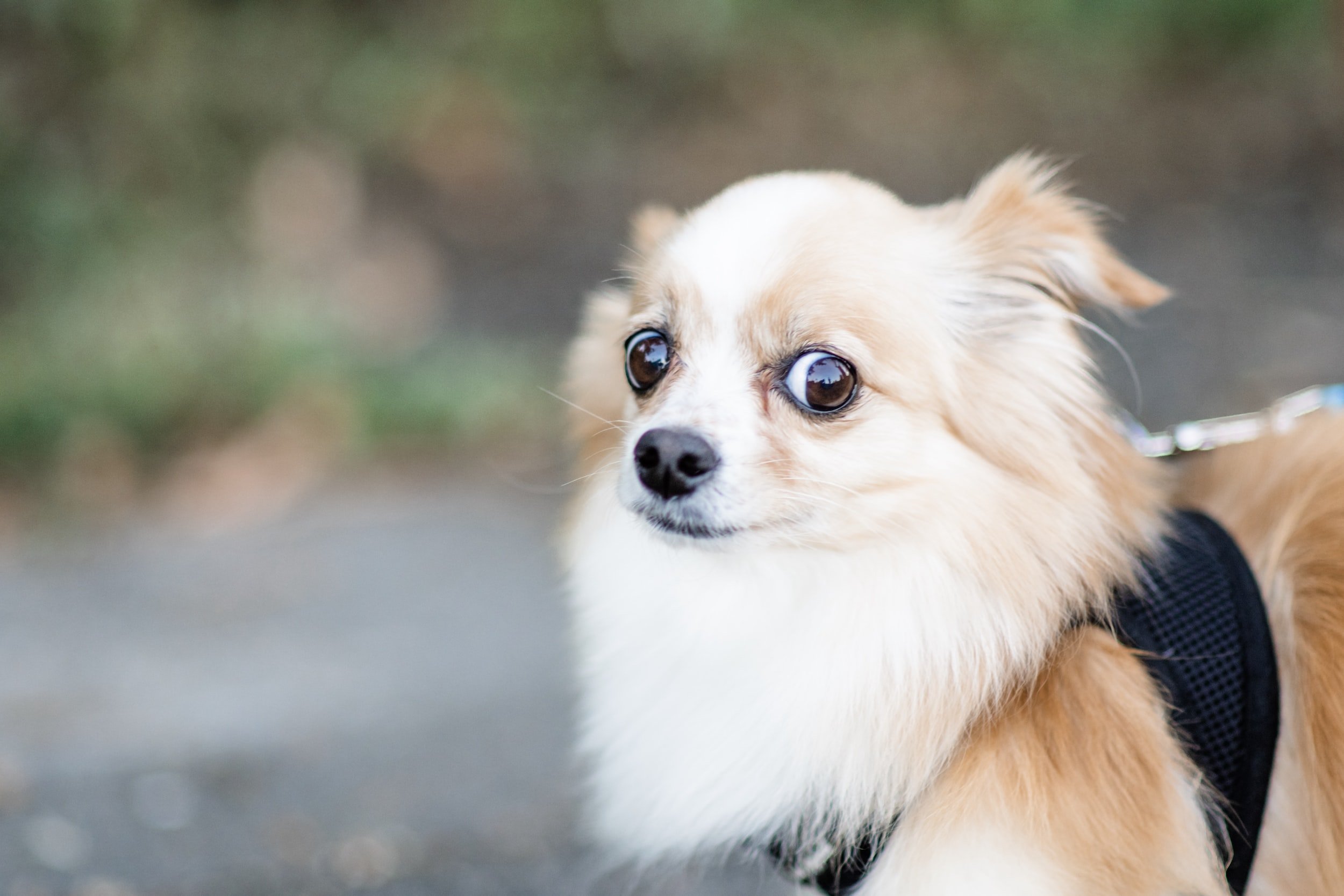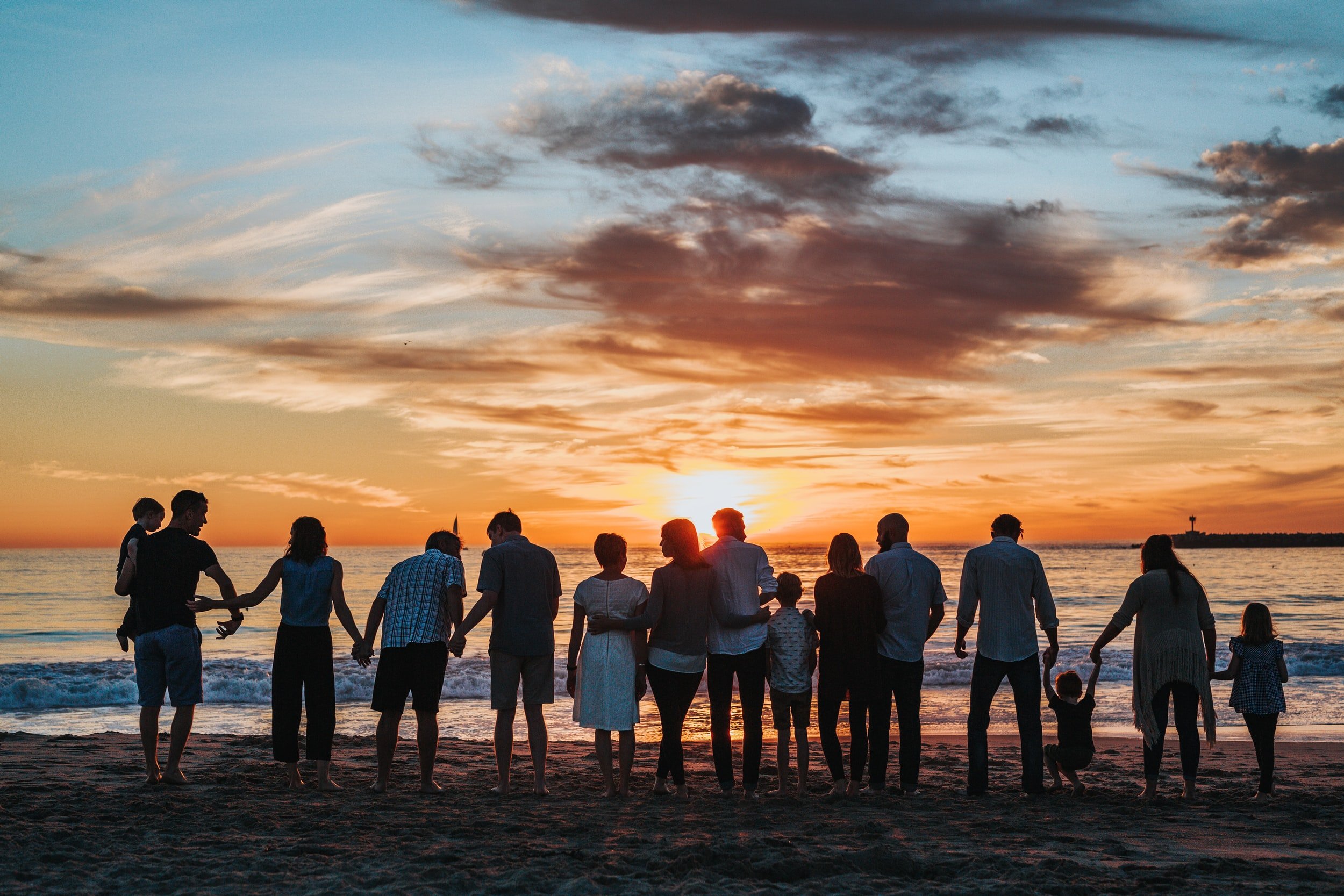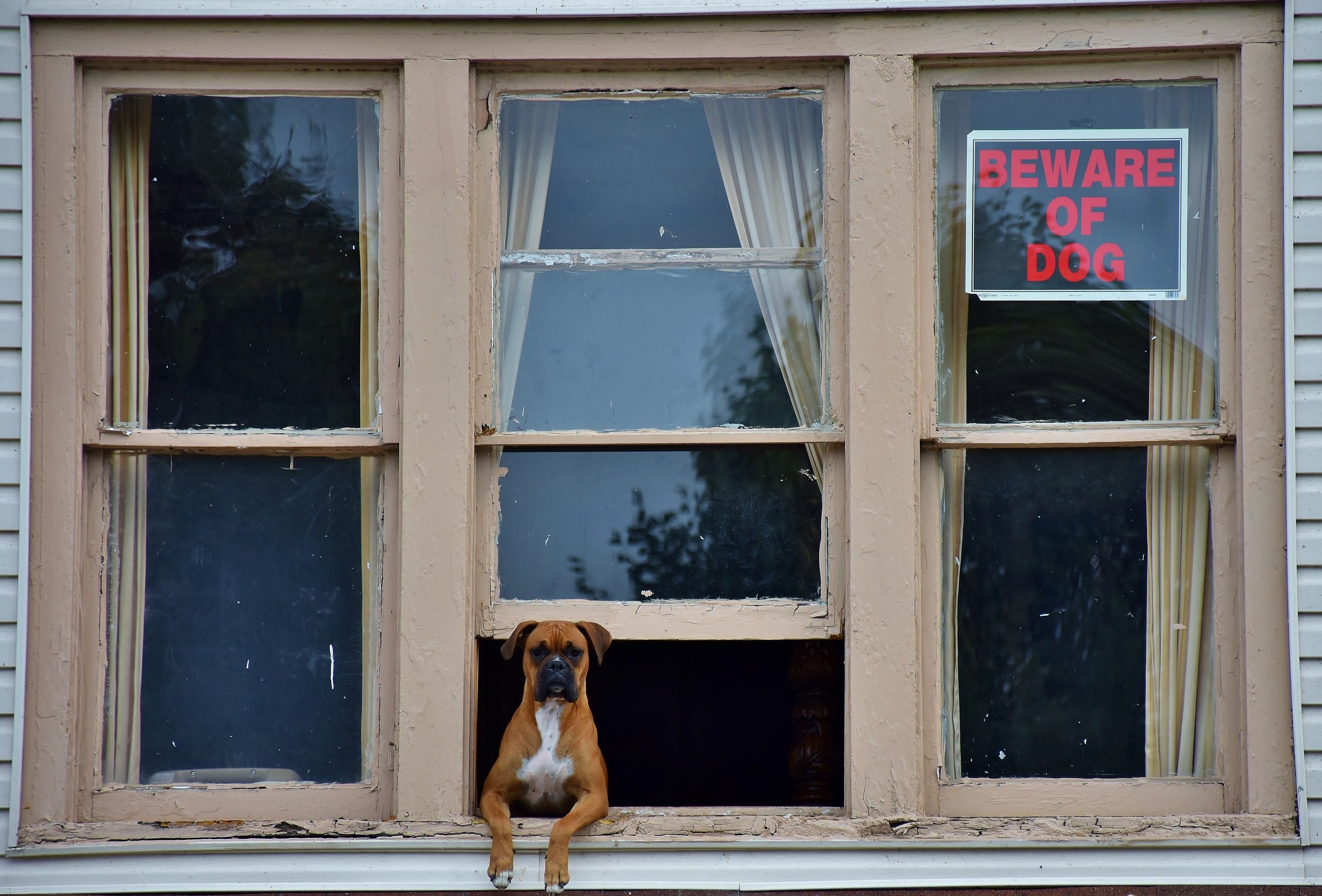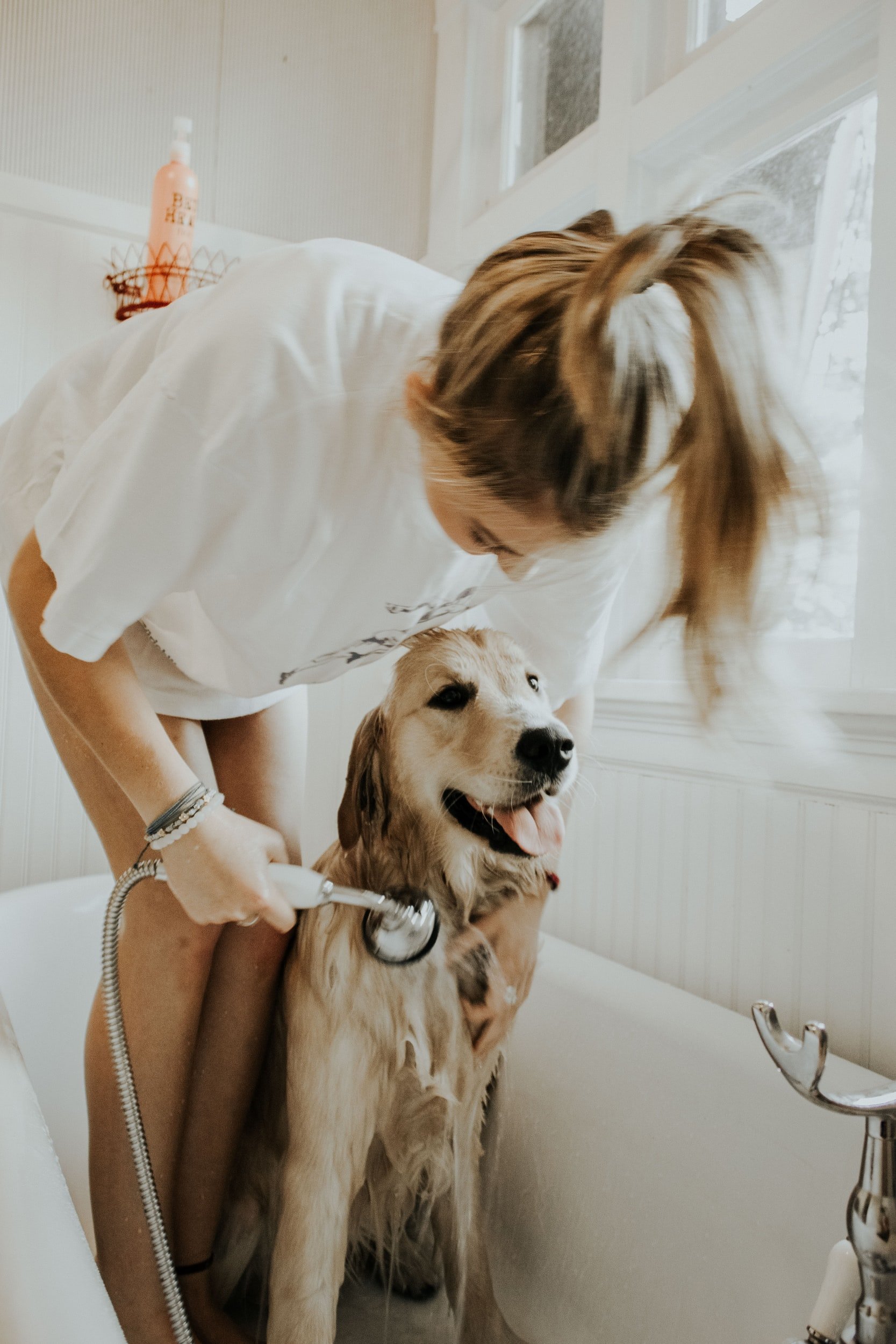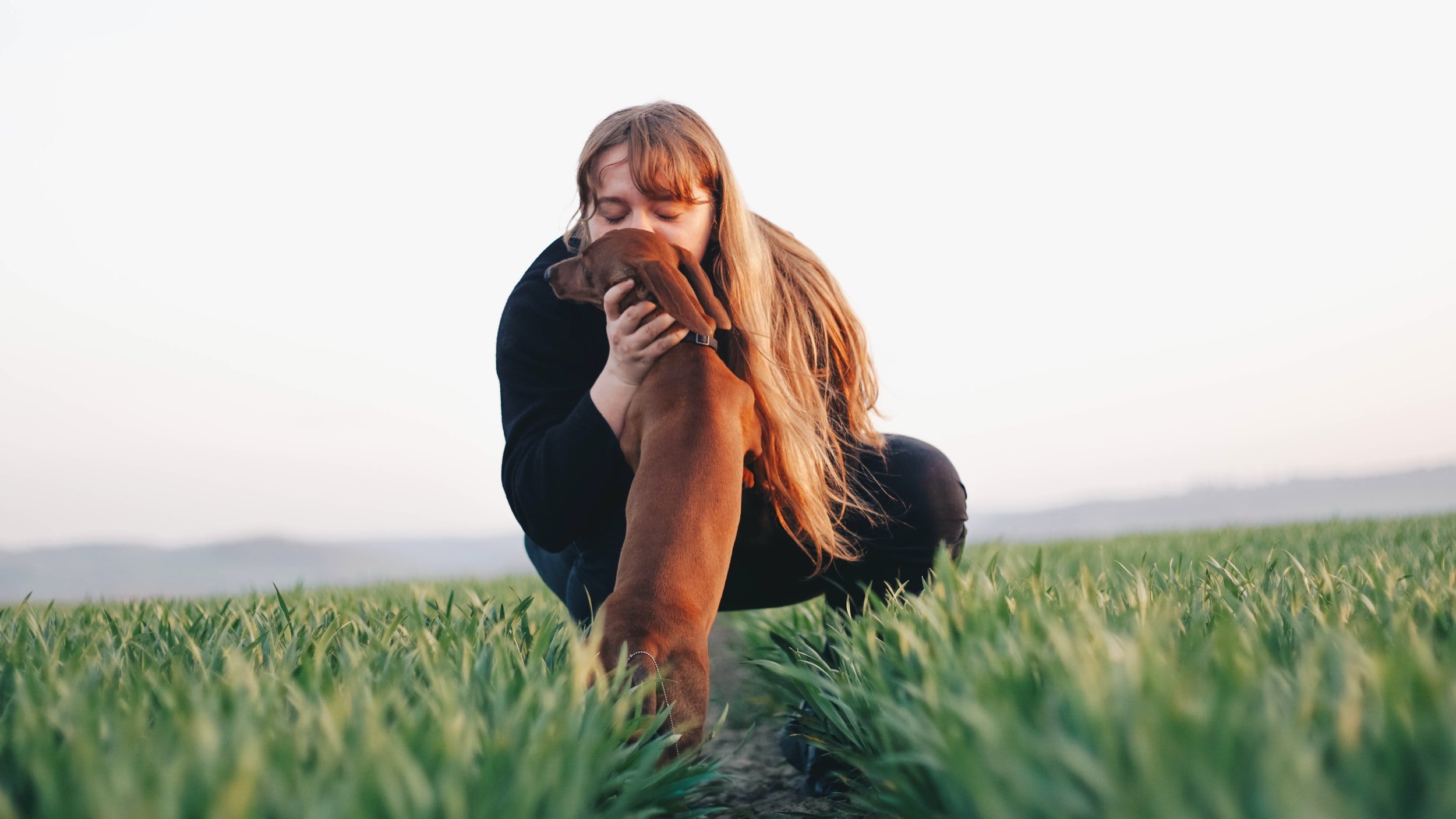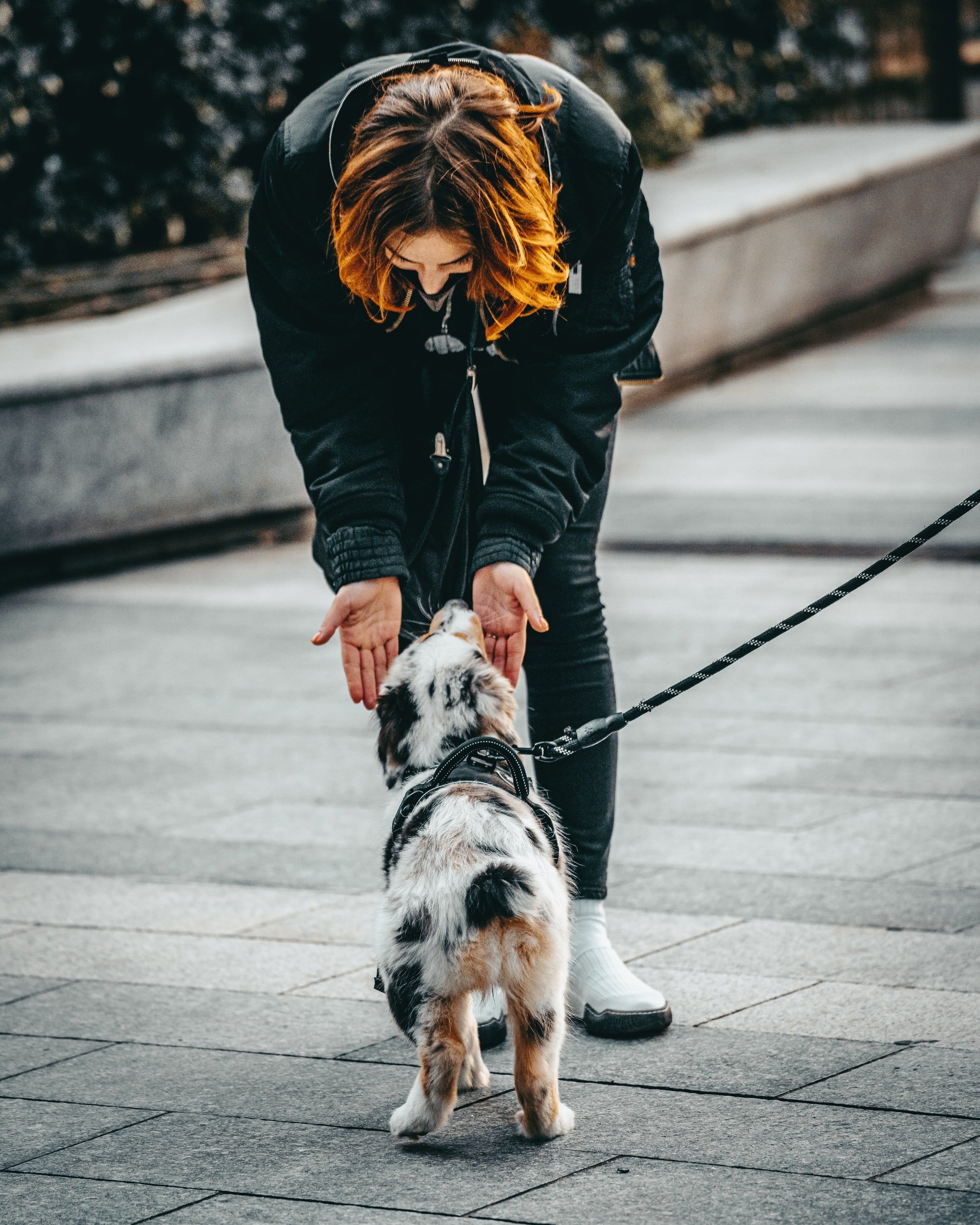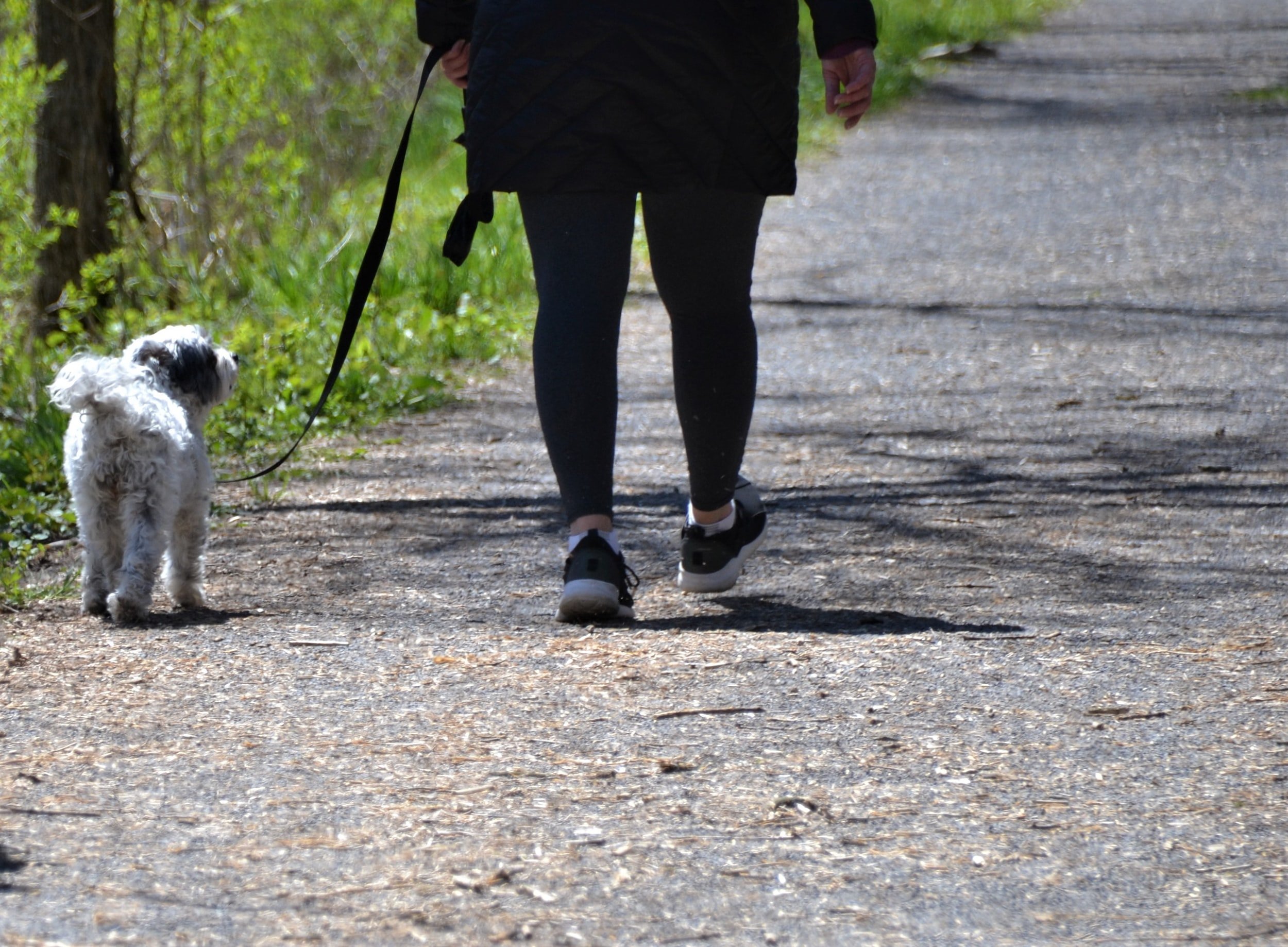Are you socializing your puppy properly? (Photo: Brown and white puppy making puppy dog eyes)
We all know that we need to socialize our new puppies, but everyone struggles with how to do this properly.
The word socialize was probably a really poor choice, because it makes most pet parents think they should go to the dog park with their puppy before she’s fully vaccinated so that she can meet lots of dogs. Please do not take your puppy to a dog park.
Socialization actually begins when your puppy is with her mother, her litter, and her breeder, so choose very, very carefully when selecting a breeder. Reputable breeders should be breeding for the betterment of the breed. They should be showing their dogs in conformation, putting titles on their dogs, and be health testing their dogs before breeding them. They should also know how to begin socializing the litter of puppies properly, bringing in calm people of various age, size, sex, race, etc. They should also be exposing the puppies to different sights, sounds, textures, smells, etc. and be teaching the puppies to simply be neutral around these things.
Proper socialization begins with your breeder and your puppy’s mother. Choose wisely. (Photo: mother dog nose-to-nose with her puppy,)
So, socialization begins with the breeder and ends with you. This critical stage in development begins when the puppies are born and ends around three months of age (12 weeks old.) There is some debate over this timeframe, with many experts reporting that this critical stage ends at 16 weeks. So, what do you do if you adopt a puppy at 15 weeks of age? And what do you do if the breeder was a backyard breeder who didn’t socialize your puppy properly. Let’s talk about it, because this happens a lot.
One of my clients adopted a puppy off of Kijiji and was originally told the puppy’s birthdate was April 20th. She was later told the birthdate was April 7th, meaning that she was going to adopt her puppy at 15 weeks of age. This made her extremely anxious because now she would only have one week to socialize her puppy. Like many pet parents, she thought her puppy had to be petted by lots of people and had to meet lots of dogs. How was she going to cram all of this into one stressful week, especially as a working mom?
The other tricky piece of this puzzle is that the puppy the family adopted was quite fearful.
There’s a lot of nuance to owning a fearful or shy puppy. In-home training sets you up for success from day one. (Photo: nervous Pomeranian mix)
The first few days didn’t start off well. The family had never owned a fearful puppy before. He bit people who reached their hand out for him to sniff (this is the wrong way to greet a dog, by the way, and we need to stop teaching everyone on planet Earth that it’s correct.) He growled at people who came into the home, the veterinarian (who referred the family to me for help,) nipped two children, and snapped at a Golden Retriever. This left the owners feeling very overwhelmed when they reached out to me for help.
The goal for socialization is to teach your puppy to be calm and neutral around all of the things you would like them to be calm and neutral around as adults. In a nutshell, your job is to expose your puppy to all the crazy things on planet Earth that are normal to us humans, and teach the dog that these things are no big deal. That’s everything from sprinting children playing tag, to motorized scooters, and everything in between. Take a deep breath, because you can do it! And you need to be calm while doing it, so take another deep breath.
Socializing your puppy is fun! Enjoy it! (Photo: Rottweiler puppy playing beside a swimming pool,)
We began our first session with a guest greeting that made their puppy feel safe. Greeting a fearful puppy or dog means putting their needs before your own. No touch, no talk, no eye contact is the key. Just because a nervous dog moves closer to you does NOT mean that they want to be petted.
When we moved to the backyard, you could see that their puppy was afraid of the dog next door who was barking behind the fence. His go-to move had been to run to the back door and pray someone would let him in. By keeping him on a leash, we were able to show him how to relax and just be. Eventually he settled down on the ground to rest. The family did an amazing job guiding him past his fear.
Here’s a list of some of the things this puppy was being socialized to simply by being in the family’s backyard during our first in-person session:
-children running, playing, climbing, jumping
-children playing with remote control trucks and a loud toy lawn mower (note: they did a great job playing with these things nearby, but not rushing toward their puppy with the toys!)
-a guest (me! haha!)
-a barking dog
-patio stones, mulch, grass
-water (he LOVES playing in water)
-a hose
-children pushing a wheelbarrow filled with tools
-children wearing hats (the cutest construction hat ever!)
Teach your puppy to be calm and neutral around children. Distance is your friend. Focus on exposure, not being petted. (Photos: children playing with bubbles)
We also taught their puppy how to:
-follow them on the leash instead of pull
-come when called
He also enjoyed time simply chewing on one of his toys. If any of you are struggling with your puppy always chewing on mulch, grass, weeds, and leaves, be sure to provide a chew toy as an alternative.
Pro tip:
When puppies refuse the chew toy and target mulch, weeds, fingers, and toes, it’s time for a crate nap.
Near the end of our session, we let the puppy's leash drag on the ground behind him. Would he stay calm, or bolt for the back door as he’d been doing in the past?
The first activity he chose was to play in the water. After that, he followed their daughter toward the back of the house. He watched her for a moment and then calmly returned to us.
No more running to the back door and praying someone would save him from the scary backyard. Success!
Teach your puppy that he can look to you for direction, protection, and affection. (Photo: beagle calmly looking up at his handler)
If you have a new puppy and aren’t sure how to socialize him properly, you need a list of all of the things your puppy should be exposed to in this critical socialization window. Sign up at the bottom of any page on our website this week and I will send you my list. I love research. I have looked at every list I could find on the web. I have compiled tips from books, videos, and courses I’ve taken. I've also added to this list for years as I’ve worked with litters of puppies at the University of Guelph, my own puppy, client puppies, and rescue dogs who have missed this window completely. You need this list. If you’re reading this in the future and you would like the list, please email us with the word “List” in the subject line. If you are a current subscriber and you would like the list, please email us with the word “List” in the subject line.
If you’ve never owned a fearful puppy, you’ll want in-home sessions (or online sessions) as well to find out what to do when your puppy:
is afraid of your backyard
refuses to walk on a leash
pulls like crazy on the leash when you turn toward home
growls at your houseguests
freezes out of fear and/or tries to hide
stops during your walk and refuses to budge
Don’t wait until you’re out of the critical window to get help. You don’t want more houseguests getting nipped and you don’t want to end up with a dog who pulls on the leash at people doing peoply things (bike riding, gardening, skateboarding etc.)
Imagine having the peace of mind that you’re socializing your puppy properly. We’ve helped so many families through this confusing time who now have well-behaved family dogs they can bring anywhere. It’s your turn. You deserve it!
Schedule your free call now: https://beyonddogtraining.ca/take-action
You want to be able to include your dog in big family gatherings like this one (Photo: people of all ages holding hands on a beach at sunset)
More free tips here:
Check out our social media for videos and more tips on puppy socialization!
GoBeyondDogTraining on Instagram and Facebook
BeyondDogTraining on TikTok
Check out the story highlights on IG: pandemic puppies, prevention, and puppy tips.
Thank you so much for reading the blog!
Have a wonderful weekend, Dog Leaders!
Alyssa
Photos by: Izabelly Marques @izamarques (Brown and white puppy making puppy dog eyes,) Jametlene Reskp @reskp (mother dog nose-to-nose with her puppy,) Upsplash Images (nervous Pomeranian mix),) Stephanie Cook @stephtcook (Rottweiler puppy playing beside a swimming pool,) Katherine Hanlon
@tinymountain (children playing with bubbles,) Jaroslaw Knapek @jr3 (beagle calmly looking up at his handler,) Tyler Nix @nixcreative (people of all ages holding hands on a beach at sunset,)







